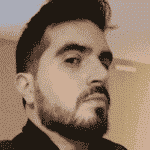It’s always great to go back to XDS. As my teammate mentioned in a previous post, I’ve been going for several years now, but this was the first year I was invited to participate from the stage. It helped that the whole presentation on UI/UX was a collaboration with Raman Bassi, Associate Producer at EA. There were particular questions that seemed the most important to the crowd, and I thought it’d be worthwhile to share the insights here as well.
What did we talk about?
Basically, the focus of our presentation was on UI/UX developments in UFC 3, and all the things (be it practices, ideas, restraints, or decisions) that make this 12-year relationship keep working. We’ve come a long way, from a team of 5 Globers to the current 150+, but we’ve come the furthest in terms of the trust EA and Globant share. How have we made it to this level? Read on.
The most crucial part: one-team mentality
In order for us to continue coming out with some of the world’s favorite games, and making them even better year after year, it’s been crucial for us to keep in mind a few things. Foremost among them is the importance of working as one team. We’re always aware of what separates us— perhaps culture, perhaps vision. But what we have centered on is our goal of collaborating under the same motivation, sharing the same drive.
Everyone on the team, whether technically on EA’s payroll or Globant’s, understands that we aren’t two teams. We’re one team, working side by side to get to the best possible final product. It helps that the established framework is our shared vision: when your team clearly understands the game’s vision, everything else falls into place. This is the source of motivation for every team member. This is the guideline by which we make our decisions, day in and day out. And to support this, we have made it a point to take the time necessary, on both ends, to visit one another. The benefit of seeing one another in their own context, get to know the way they do their work while sitting at the next desk over…it’s invaluable.
4 pillars of the one team mentality
In order to achieve the zen state of “One Team”, I recommend a 4-pronged approach that forms the solid base to keep building on.
Vision
It’s key to motivate and engage your team members with the product or game you are building, as you already know. The key to keep in mind in this aspect: you need to be able to pass on the VISION. What is “vision”? I’d like to say it’s like the North that the compass points to, the goal we need to accomplish as a team with our game. It’s essential when building the game and doing tasks on lengthy projects, to understand the final goal and let it determine the way you make decisions as a team.
Ownership
The second step is to provide OWNERSHIP to each team member. Now that they understand why your team is doing things the way they are, they need to know they have the room to make their own decisions. And that each one of them is an integral part of the game development. This involves a strong dose of autonomy; they must fully engage with the product, and have strong leaders that empower them to make the choices they see fit.
Flexibility
Then, having set up vision and ownership, you’ll have all the necessary tools to have a FLEXIBLE approach. Making games is hard, and it requires flexibility to entice creativity and to test different concepts and prototypes. Few people excel at being productive in a creative kind of work while they’re under pressure. Being flexible also allows us to shift around team members based on what’s required for the process, and implement the “Shadow” position, but more on that later.
Quality
Last, but not least, QUALITY is what every game developer wants to achieve, to perfection. When you work with companies such as EA, they expect quality at the highest level, and it’s neither easy or cheap. To get to this level, you need to iterate and take enough time to get as close to perfection as you can. But, if you’ve been following the pillars listed before, you’ll realize that this is easy to come by. Because you’ve already got motivated and proactive team members who want to make the game best ever.
What’s changed in 12 years? UI, UX and a few more things…
It has been a long, fascinating road for us (Globant & EA together). But many things change in 12 years, especially due to the pace of changing technology. This same factor has influenced our collaborations in more ways than one. For example, the need that we keep seeing in our work is the increased demand for UI and UX in games. A simple menu is no longer enough; users want things to be ever more intuitive, frictionless, and time-saving. This takes serious consideration, and most of all talent. That’s been one of the biggest areas we’ve improved with EA over the years.
Shadow position and ensuring talent
Of course, in 12 years in the current economy, you’re also talking about people changing positions and jobs. A crucial element of our joint approach: the shadow position, which I alluded to above. As part of the commitment to flexibility, Globant made available a position to “shadow” various team members, at no additional cost of course. The goal was to guarantee that we could get the game where it needed to be by the date the community expected it. We can’t risk showing up late to the party. The shadow position saves the day when it’s needed, when a teammate is sick or (in my case, having someone cover for my cat’s emergency surgery). It’s a good way to prevent team members’ inconveniences get in the way of the delivery.
And the last key point: always ensure quality and talent. When our focus is constantly on improving, perfecting, and delivering beyond expectations, our team will succeed. This brings back to mind my former point, about the pillar of quality. And it’s contagious; when everyone on your team is setting a high standard, that sparks the same motivation for you as well. The ideas flow, conversations are direct and honest, and we unite towards that same shared vision.
At the end of the day…
People are what makes your team work. It’s always worth investing the time in the relationships that compose the team. The best way to ensure a healthy project and a game that beats expectations, is to motivate your team members to want to perform at their best. You do this by giving them VISION of what’s ahead, empowering so they feel OWNERSHIP of their day to day tasks, while also being FLEXIBLE enough to accommodate for change, ultimately leading to an increase in QUALITY, ensuring that our gamers get the best game possible in their hands.
To learn more about our UI and UX capabilities, please visit our studios.





